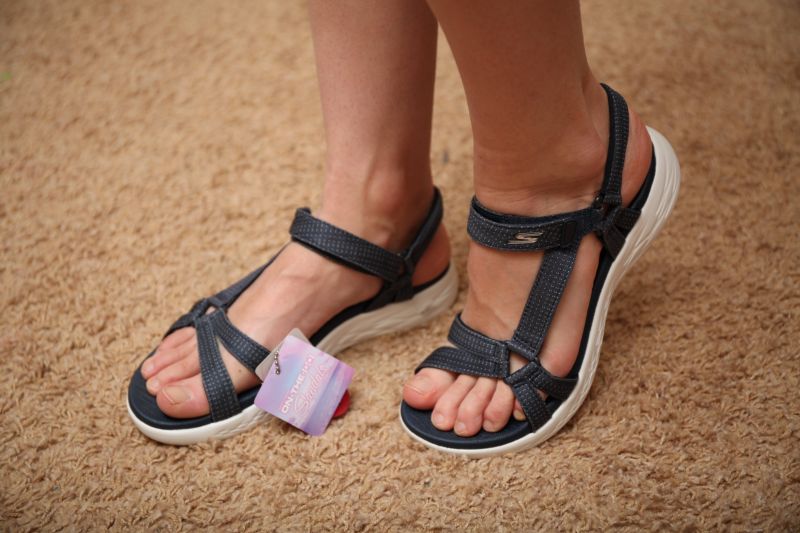Are Your Lacrosse Stick and Shoulder Pads Compromising Your Gait. Here’s How to Make Key Adjustments for a Better FitAre Your Lacrosse Stick and Shoulder Pads Compromising Your Gait. Here’s How to Make Key Adjustments for a Better Fit
Whether you’re a seasoned lacrosse veteran or just lacing up for your first season, having properly fitted equipment is crucial for optimal performance and injury prevention. An ill-fitting stick or restrictive shoulder pads can throw off your natural running gait, limiting your mobility and speed on the field. The good news is that with a few easy adjustments, you can customize your gear for a better fit and more fluid movement.
Measure Your Stick Length to Ensure Proper Sizing
Your lacrosse stick needs to be the right length for your body size and playing position. Attack players often prefer a shorter stick for tighter stick handling and quicker shots on goal. Defenders need a longer stick to intercept passes and checks. Goalies need one in between to maximize their range. To find your ideal length, stand upright with your arms relaxed at your sides. The top of the head of your stick should reach between your nose and chin. The end of the shaft should come to just below your armpit. If your stick is too long or short, it can inhibit your cradling, throwing, catching and scooping motions. Getting one that’s properly sized for you will allow you to move and play more naturally.
Consider Adjustable Lacrosse Sticks

For younger players who are still growing, adjustable lacrosse sticks are a great option. These allow you to extend the shaft length as needed over time. Adjustable heads are also available to customize pocket depth and shape. Having this flexibility enables you to tweak your stick’s specifications to complement your progressing skills and stature.
Fitting Shoulder Pads Correctly is Crucial – Here’s How
Shoulder pads that are too loose won’t adequately protect your upper body when absorbing checks. Ones that are too bulky or tight can restrict arm movement, which is vital for cradling, passing and shooting. When putting on your shoulder pads, make sure the padded epaulets fully cover your shoulders without drooping down your arms. Straps should fit snugly but not dig into your shoulders. For proper arm mobility, you want the pads to end about an inch or two above your elbows. If your current shoulder pads are limiting your range of motion, look for a lightweight pair contoured to match your frame.
Consider Adjustable Lacrosse Shoulder Pads
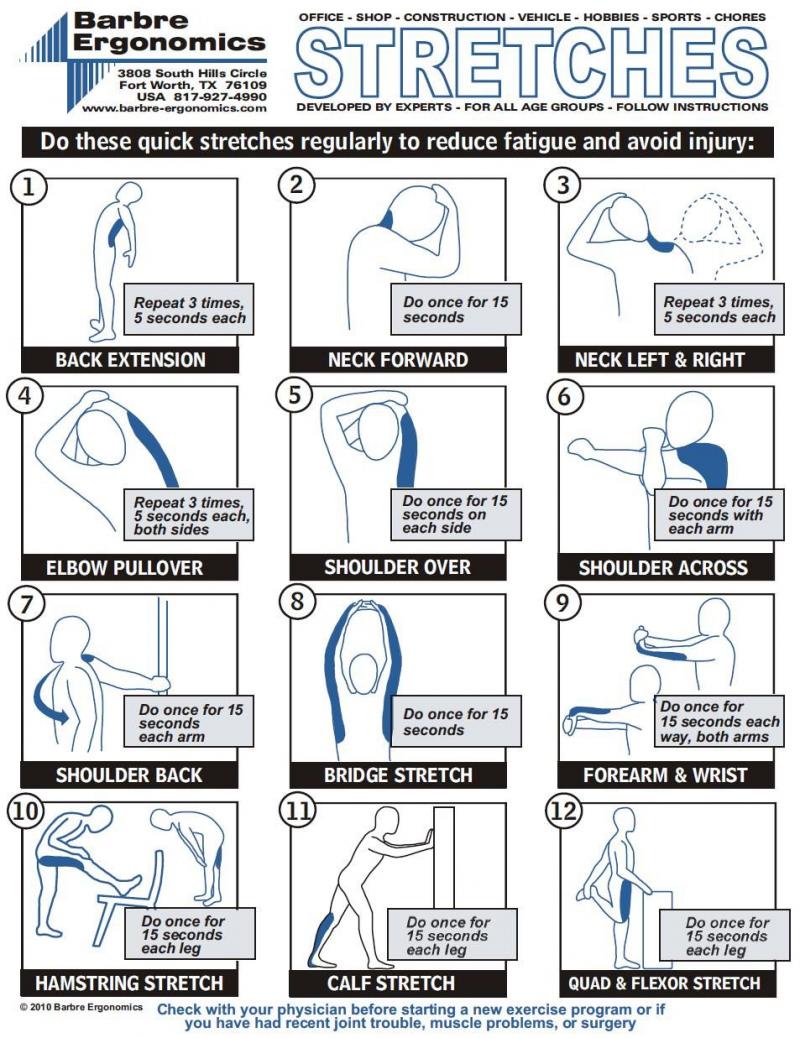
Many companies now offer adjustable lacrosse shoulder pads with removable pad inserts and velcro straps. These let you customize the thickness and tightness as needed until you find your ideal fit. Adjustable pads also allow you to modify your protection level as you get stronger and develop better body control when absorbing checks.
Customizing Pocket Depth and Shape Improves Stick Handling
The pocket of your stick’s head heavily influences how the ball releases when passing and shooting. A pocket that’s too shallow can cause the ball to slip out on catches and cradles. Too deep, and it gets stuck at the bottom, slowing down your throws and shots. Work with mesh and leathers to string a pocket with a mid-range “sweet spot” depth ideal for your playing style. Shape-wise, a wider pocket promotes smoother catches while a narrower channel provides more accuracy. Tie appropriate sidewall strings to create the optimal pocket for how you handle the ball.
Consider an Adjustable Lacrosse Head
Mastering Lacrosse Stick Length for Optimal Performance
The length of a lacrosse stick is a crucial factor in a player’s ability to perform effectively on the field. Different positions require varying stick lengths to maximize their specific roles and responsibilities.
Ideal Stick Lengths for Different Positions
Understanding the optimal stick length for each position is essential:
- Attack players: Shorter sticks for quick handling and precise shots
- Defenders: Longer sticks for intercepting passes and executing checks
- Goalies: Mid-length sticks to balance range and control
To determine the ideal stick length, players should stand upright with arms relaxed at their sides. The top of the stick’s head should reach between the nose and chin, while the shaft’s end should fall just below the armpit.
Benefits of Proper Stick Length
A correctly sized lacrosse stick offers numerous advantages:
- Improved cradling technique
- Enhanced throwing accuracy
- Better catching ability
- More efficient scooping motions
- Increased overall control and maneuverability
Exploring Adjustable Lacrosse Sticks for Growing Players
For younger players experiencing growth spurts, adjustable lacrosse sticks provide an excellent solution to maintain proper equipment sizing over time.
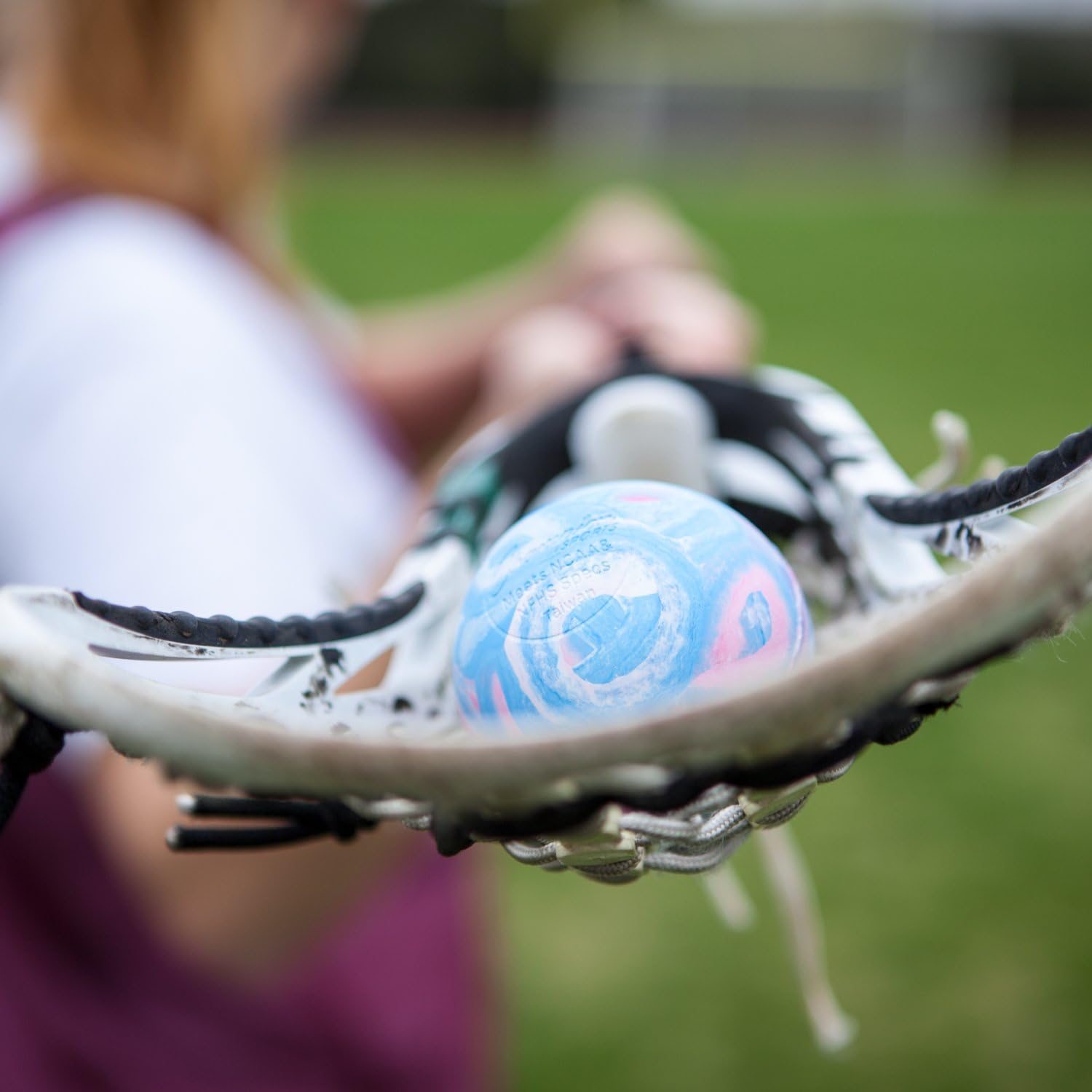
Advantages of Adjustable Lacrosse Sticks
Adjustable sticks offer several benefits for developing players:
- Extensible shaft length to accommodate growth
- Customizable pocket depth and shape
- Ability to modify specifications as skills progress
- Cost-effective alternative to purchasing multiple sticks
By investing in an adjustable lacrosse stick, players can ensure their equipment grows with them, providing consistent performance throughout their developmental years.
Perfecting Shoulder Pad Fit for Maximum Protection and Mobility
Properly fitted shoulder pads are essential for both protection and unrestricted movement on the lacrosse field. Finding the right balance between coverage and flexibility is crucial for optimal performance.
Key Considerations for Shoulder Pad Fitting
When assessing shoulder pad fit, players should focus on the following aspects:
- Epaulets should fully cover the shoulders without drooping
- Straps should fit snugly but not dig into the skin
- Pads should end 1-2 inches above the elbows for proper arm mobility
- Overall fit should be contoured to the player’s frame
Is it possible to find shoulder pads that offer both protection and flexibility? Yes, many manufacturers now produce lightweight, contoured pads designed to match a player’s body shape while providing adequate protection.
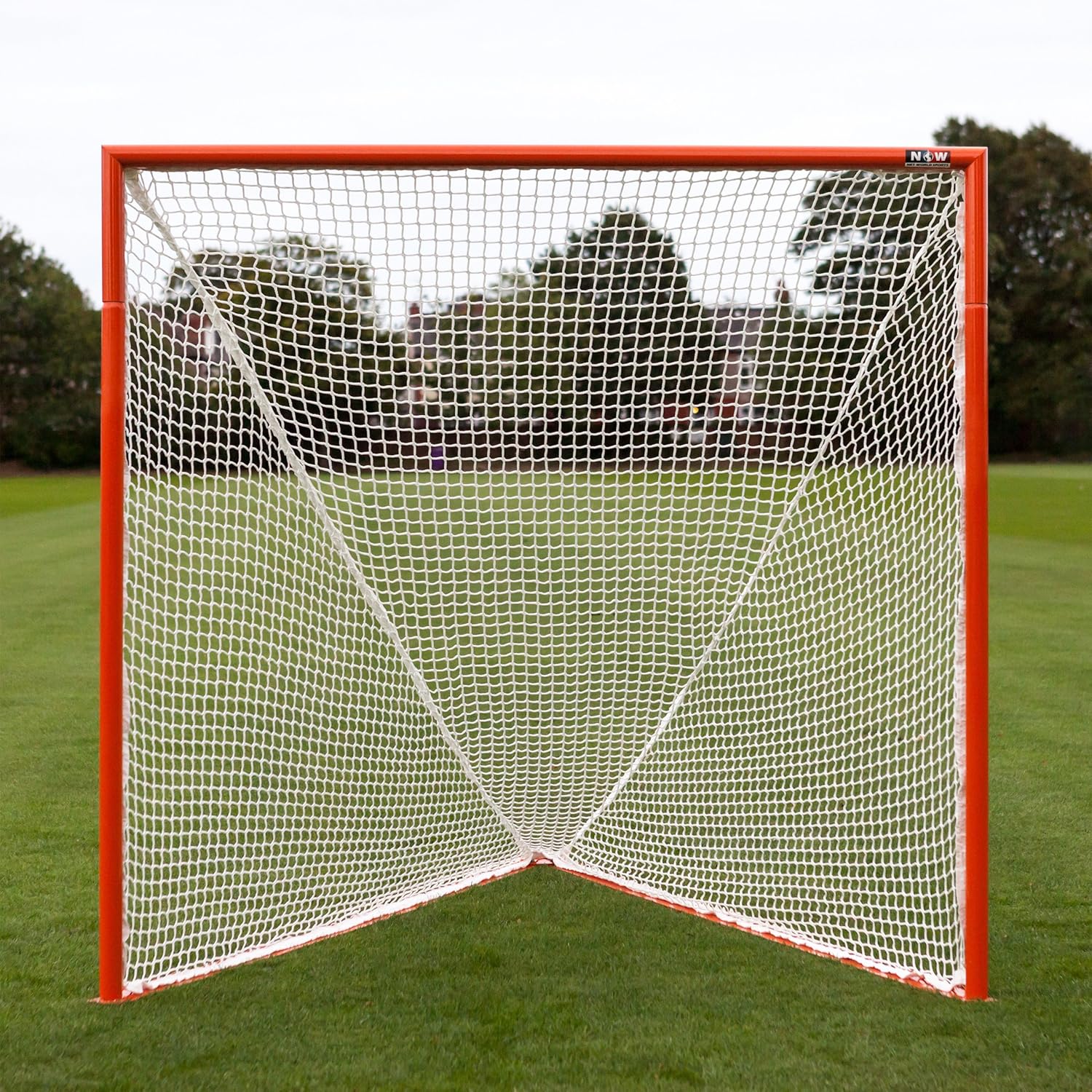
The Rise of Adjustable Lacrosse Shoulder Pads
Adjustable lacrosse shoulder pads have gained popularity due to their versatility and customization options. These innovative designs allow players to fine-tune their protection and comfort levels.
Features of Adjustable Shoulder Pads
Adjustable shoulder pads typically offer the following customization options:
- Removable pad inserts for thickness adjustment
- Velcro straps for precise tightness control
- Modifiable protection levels as players develop
- Ability to accommodate changes in body shape and size
By utilizing adjustable shoulder pads, players can ensure a perfect fit throughout their lacrosse career, adapting to changes in their physique and playing style.
Optimizing Pocket Depth and Shape for Enhanced Stick Handling
The pocket of a lacrosse stick’s head plays a crucial role in ball control, passing, and shooting accuracy. Customizing pocket depth and shape can significantly improve a player’s stick handling abilities.
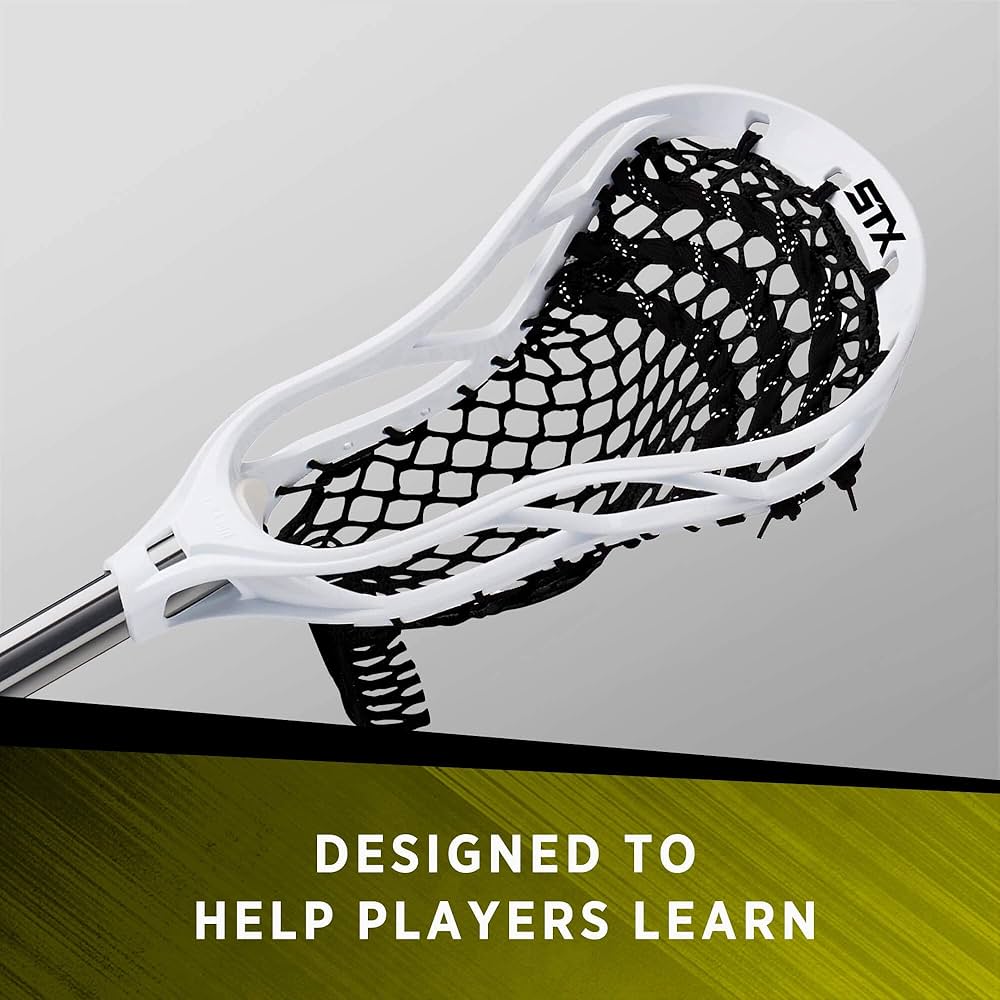
Finding the Ideal Pocket Configuration
Players should consider the following factors when adjusting their stick’s pocket:
- Depth: A mid-range “sweet spot” depth for optimal ball retention and release
- Width: Wider pockets for smoother catches, narrower channels for increased accuracy
- Mesh and leather combination: Experimentation to find the perfect balance
- Sidewall strings: Proper tying techniques to create the desired pocket shape
How can players determine the best pocket configuration for their playing style? It often requires experimentation and practice to find the ideal setup that complements individual strengths and preferences.
The Advantages of Adjustable Lacrosse Heads for Skill Development
Adjustable lacrosse heads offer a valuable tool for players still refining their skills and adapting to changes in their physical abilities.
Benefits of Adjustable Heads
Adjustable lacrosse heads provide several advantages for developing players:
- Customizable pocket depth and width
- Removable plastic inserts for sidewall stiffness adjustment
- Ability to modify pocket characteristics as skills improve
- Reduced need for multiple stick purchases during skill progression
By utilizing an adjustable head, players can continually optimize their stick’s performance to match their evolving abilities and playing style.

Continuous Evaluation and Adjustment of Lacrosse Equipment
To maintain peak performance and safety, lacrosse players should regularly assess and adjust their equipment. This ongoing process ensures that gear continues to fit properly and meet the player’s changing needs.
Key Areas for Regular Equipment Evaluation
Players should focus on the following aspects when evaluating their lacrosse gear:
- Stick length and overall condition
- Shoulder pad fit and protection level
- Pocket depth and shape
- Helmet fit and padding integrity
- Glove flexibility and protection
How often should players evaluate their equipment? It’s recommended to perform a thorough gear check at least once per season, with more frequent assessments for rapidly growing youth players.
By prioritizing proper equipment fitting and making necessary adjustments, lacrosse players can optimize their performance, reduce injury risk, and fully enjoy the sport. Whether it’s fine-tuning stick length, customizing shoulder pad fit, or perfecting pocket configuration, these small changes can lead to significant improvements on the field. As players continue to grow and develop their skills, regular equipment evaluation and adjustment will remain crucial for maintaining peak performance and safety throughout their lacrosse careers.

Whether you’re a seasoned lacrosse veteran or just lacing up for your first season, having properly fitted equipment is crucial for optimal performance and injury prevention. An ill-fitting stick or restrictive shoulder pads can throw off your natural running gait, limiting your mobility and speed on the field. The good news is that with a few easy adjustments, you can customize your gear for a better fit and more fluid movement.
Measure Your Stick Length to Ensure Proper Sizing
Your lacrosse stick needs to be the right length for your body size and playing position. Attack players often prefer a shorter stick for tighter stick handling and quicker shots on goal. Defenders need a longer stick to intercept passes and checks. Goalies need one in between to maximize their range. To find your ideal length, stand upright with your arms relaxed at your sides. The top of the head of your stick should reach between your nose and chin. The end of the shaft should come to just below your armpit. If your stick is too long or short, it can inhibit your cradling, throwing, catching and scooping motions. Getting one that’s properly sized for you will allow you to move and play more naturally.
Consider Adjustable Lacrosse Sticks

For younger players who are still growing, adjustable lacrosse sticks are a great option. These allow you to extend the shaft length as needed over time. Adjustable heads are also available to customize pocket depth and shape. Having this flexibility enables you to tweak your stick’s specifications to complement your progressing skills and stature.
Fitting Shoulder Pads Correctly is Crucial – Here’s How
Shoulder pads that are too loose won’t adequately protect your upper body when absorbing checks. Ones that are too bulky or tight can restrict arm movement, which is vital for cradling, passing and shooting. When putting on your shoulder pads, make sure the padded epaulets fully cover your shoulders without drooping down your arms. Straps should fit snugly but not dig into your shoulders. For proper arm mobility, you want the pads to end about an inch or two above your elbows. If your current shoulder pads are limiting your range of motion, look for a lightweight pair contoured to match your frame.
Consider Adjustable Lacrosse Shoulder Pads

Many companies now offer adjustable lacrosse shoulder pads with removable pad inserts and velcro straps. These let you customize the thickness and tightness as needed until you find your ideal fit. Adjustable pads also allow you to modify your protection level as you get stronger and develop better body control when absorbing checks.
Customizing Pocket Depth and Shape Improves Stick Handling
The pocket of your stick’s head heavily influences how the ball releases when passing and shooting. A pocket that’s too shallow can cause the ball to slip out on catches and cradles. Too deep, and it gets stuck at the bottom, slowing down your throws and shots. Work with mesh and leathers to string a pocket with a mid-range “sweet spot” depth ideal for your playing style. Shape-wise, a wider pocket promotes smoother catches while a narrower channel provides more accuracy. Tie appropriate sidewall strings to create the optimal pocket for how you handle the ball.
Consider an Adjustable Lacrosse Head
For younger players still honing their skills, a head with an adjustable pocket allows you to tweak the depth and width as you improve. Removable plastic inserts enable you to alter the sidewall stiffness as your hands strengthen for tighter cradling. Being able to customize the pocket shape and dimensions will complement your emerging abilities.
Having lacrosse equipment that’s tailored for you removes restrictive barriers, enabling you to move downfield and play to your full potential. Take time to regularly evaluate the fit of your stick, pads and other gear. Making a few simple adjustments could give you that extra edge to elevate your game this season.
Proper lacrosse equipment fitting is vital for maximizing your mobility and minimizing injury risk. Ill-sized pads and sticks can restrict your natural running gait, costing you speed and performance on the field. But with a few custom adjustments, you can tailor your gear for a better fit and fluidity of motion.
Measure Your Stick Length to Ensure Proper Sizing
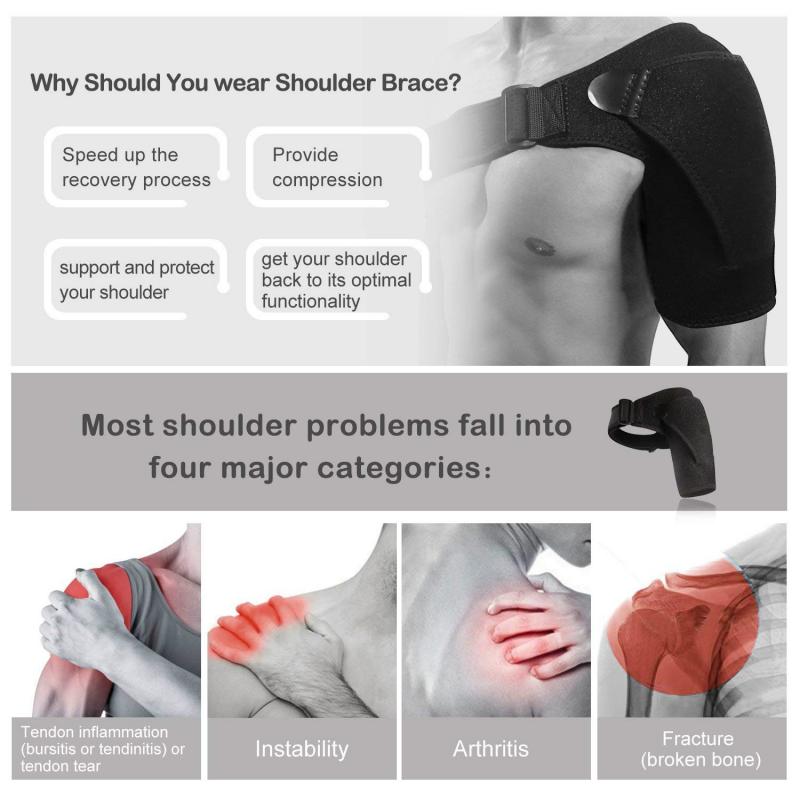
Your lacrosse stick needs to match your frame and position. Attackers tend to use shorter sticks for tighter handling and quicker firing. Defenders need longer sticks to intercept passes and poke checks. Goalies require mid-length sticks for maximum range. To find your ideal length, relax your arms at your sides while standing. The head’s top should reach your nose to chin. The shaft’s end should come just below your pit. If your stick’s too long or short, your cradling, throwing, catching and scooping can suffer. Getting a properly sized one will let you move and play more freely.
Consider Adjustable Lacrosse Sticks
Adjustable lacrosse sticks are great for younger, growing players. These let you extend the shaft as needed over time. Adjustable heads also enable customizing pocket depth and shape. Having this flexibility helps you tweak specs to match developing skills and height.
Fitting Shoulder Pads Correctly is Crucial – Here’s How
Loose shoulder pads won’t adequately cushion checks. Overly bulky or tight pads can limit essential arm motion for cradling, passing, shooting. When donning pads, ensure padded epaulets fully cover your shoulders without drooping. Straps should fit snugly but not dig in. For good arm mobility, pads should stop 1-2 inches above elbows. If your current pads restrict movement, find lightweight, contoured ones matched to your frame.
Consider Adjustable Lacrosse Shoulder Pads
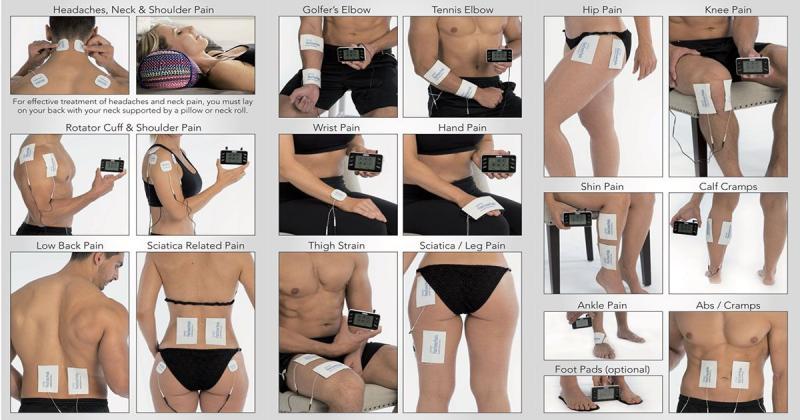
Many brands now offer adjustable lacrosse shoulder pads with removable inserts and velcro straps. These let you customize thickness and tightness for your ideal fit. Adjustable pads also enable modifying protection as you strengthen and refine body control when absorbing checks.
Customizing Pocket Depth and Shape Improves Stick Handling
Your stick’s pocket greatly affects ball release when passing/shooting. A shallow pocket can cause slips during catches/cradles. An overly deep one traps balls, slowing throws and shots. String a mid-depth “sweet spot” pocket ideal for your style. Shape-wise, a wider pocket enables smoother catches while a narrower channel provides accuracy. Tie appropriate sidewall strings to create your optimal pocket for handling.
Consider an Adjustable Lacrosse Head
Adjustable heads with customizable pocket depth/width help younger players refine skills. Removable plastic inserts let you alter sidewall stiffness as hands strengthen for tighter cradling. Tweaking pocket dimensions will complement emerging abilities.
Having fitted lacrosse gear removes restrictions, empowering you to maximize your potential. Regularly evaluate equipment fit. Simple adjustments could give you an edge this season.
Having properly fitted lacrosse gear is key for maximizing mobility and reducing injury risks. Poorly sized pads and sticks can hamper your natural running gait, costing you speed and performance. But with some custom tweaks, you can tailor equipment for better fit and fluidity of movement.
Measure Your Stick Length to Ensure Proper Sizing
Your lacrosse stick should match your physique and position. Attackers often use shorter sticks for tight handling and quick shooting. Defenders need longer sticks for intercepting passes and poking checks. Goalies need mid-length sticks to optimize range. To find ideal length, stand tall with arms relaxed. The head’s top should reach your nose to chin. The shaft’s end should come just under your pit. If your stick’s too long/short, cradling, throwing, catching and scooping can suffer. Getting a properly sized one will enable you to move and play more freely.
Consider Adjustable Lacrosse Sticks
Adjustable lacrosse sticks are great for growing younger players. These allow extending the shaft as needed over time. Adjustable heads also permit customizing pocket depth/shape. Having this flexibility helps tweak specs to match developing skills and height.
Fitting Shoulder Pads Correctly is Crucial – Here’s How
Loose shoulder pads won’t adequately cushion checks. Overly bulky/tight pads can restrict essential arm motion for cradling, passing, shooting. When putting on pads, make sure padded epaulets fully cover shoulders without drooping. Straps should fit snugly but not dig in. For good arm mobility, pads should stop 1-2 inches above elbows. If your current pads limit movement, find lightweight, contoured ones matched to your frame.
Consider Adjustable Lacrosse Shoulder Pads
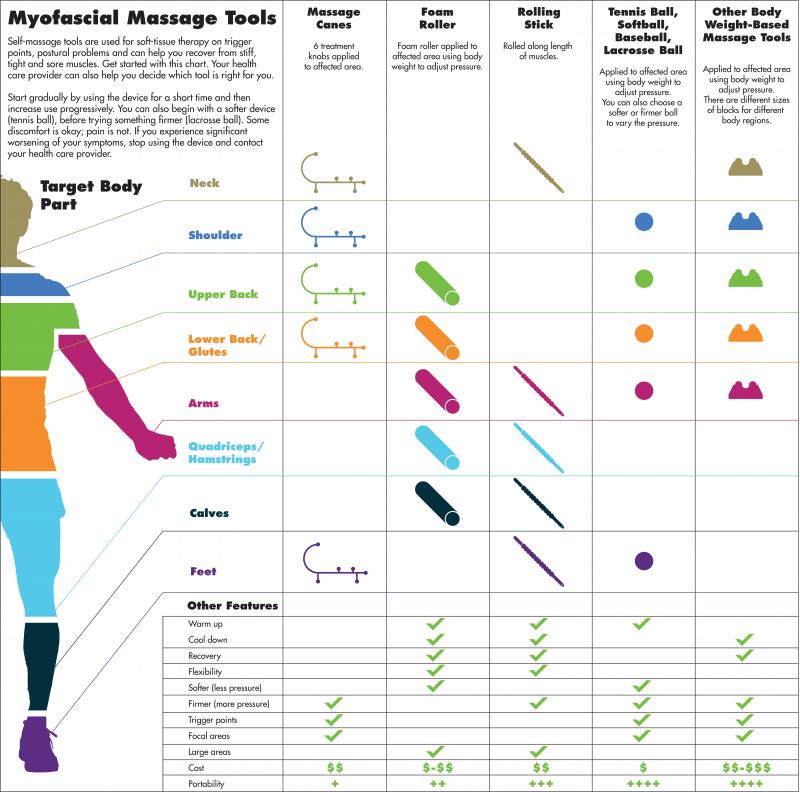
Many brands now offer adjustable lacrosse shoulder pads with removable inserts and velcro straps. These permit customizing thickness and tightness for your perfect fit. Adjustable pads also enable modifying protection as you strengthen and refine body control when absorbing checks.
Customizing Pocket Depth and Shape Improves Stick Handling
Your stick’s pocket greatly impacts ball release when passing/shooting. A shallow pocket can cause slips when catching/cradling. An overly deep one traps balls, slowing throws and shots. String a mid-depth “sweet spot” pocket ideal for your style. Shape-wise, a wider pocket enables smoother catches while a narrower channel provides accuracy. Tie appropriate sidewall strings to create your optimal pocket for handling.
Consider an Adjustable Lacrosse Head
Adjustable heads with customizable pocket depth/width aid younger players honing skills. Removable plastic inserts permit altering sidewall stiffness as hands strengthen for tighter cradling. Tweaking pocket dimensions will complement emerging abilities.
Having fitted lacrosse gear eliminates restrictions, empowering you to maximize potential. Regularly evaluate equipment fit. Simple adjustments could give you an edge this season.
Having properly fitted lacrosse gear is crucial for maximizing mobility and reducing injury risk. Poorly sized pads and sticks can restrict your natural running gait, costing speed and performance. But with some tailored tweaks, you can customize equipment for enhanced fit and fluidity of movement.
Measure Your Stick Length to Ensure Proper Sizing
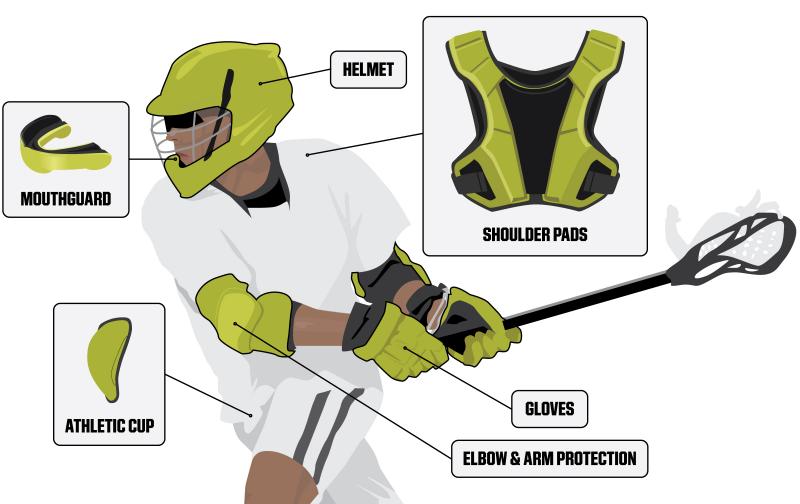
Your lacrosse stick should match your physique and position. Attackers often favor shorter sticks for tight handling and quick shooting. Defenders need longer sticks for intercepting passes and poking checks. Goalies require mid-length sticks to optimize range. To find ideal length, stand tall with arms relaxed. The head’s top should reach your nose to chin. The shaft’s end should come just under your pit. If your stick’s too long/short, cradling, throwing, catching and scooping can suffer. Getting a properly sized one will let you move and play more freely.
Consider Adjustable Lacrosse Sticks
Adjustable lacrosse sticks are great for developing younger players. These allow extending the shaft as required over time. Adjustable heads also permit customizing pocket depth/shape. Having this flexibility helps tweak specs to match progressing skills and height.
Fitting Shoulder Pads Correctly is Crucial – Here’s How
Loose shoulder pads won’t adequately cushion checks. Overly bulky/tight pads can limit essential arm motion for cradling, passing, shooting. When putting on pads, ensure padded epaulets fully cover shoulders without drooping. Straps should fit snugly but not dig in. For good arm mobility, pads should stop 1-2 inches above elbows. If your current pads restrict movement, find lightweight, contoured ones matched to your frame.
Consider Adjustable Lacrosse Shoulder Pads
Many brands now offer adjustable lacrosse shoulder pads with removable inserts and velcro straps. These allow customizing thickness and tightness for your perfect fit. Adjustable pads also enable modifying protection as you strengthen and refine body control when absorbing checks.
Stick Stringing Affects Passing, Cradling and Shooting
Your stick’s stringing greatly impacts ball release when passing/shooting. A shallow pocket can cause slips when catching/cradling. An overly deep one traps balls, slowing throws and shots. String a mid-depth “sweet spot” pocket ideal for your style. Shape-wise, a wider pocket enables smoother catches while a narrower channel provides accuracy. Tie appropriate sidewall strings to optimize your pocket for handling needs.
Consider Adjustable Stringing Options
For developing players, adjustable stringing allows tweaking pocket depth/width as skills improve. Swappable sidewall string inserts permit modifying stiffness as hand strength increases for tighter cradling. Customizable stringing will complement growing abilities.
Having fitted lacrosse gear removes restrictions, empowering your maximum potential. Regularly reevaluate equipment fit. Simple adjustments could give you an edge this season.
Having properly sized lacrosse equipment is vital for optimizing mobility and reducing injury risks. Poor fitting pads and sticks can hinder your natural gait, costing speed and performance. But with some tailored adjustments, you can customize gear for enhanced fit and fluidity of movement.
Measure Your Stick Length to Ensure Proper Sizing
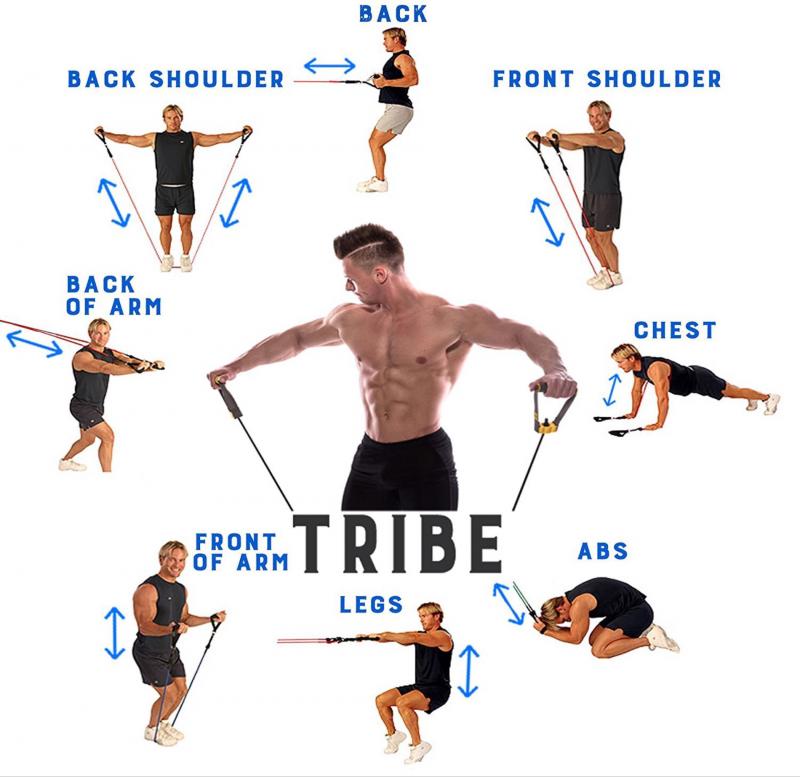
Your lacrosse stick should suit your physique and position. Attackers often favor shorter sticks for tight handling and quick shooting. Defenders need longer sticks for intercepting passes and poking checks. Goalies require mid-length sticks to optimize range. To find ideal length, stand tall with arms relaxed. The head’s top should reach your nose to chin. The shaft’s end should come just under your pit. If your stick’s too long/short, cradling, throwing, catching and scooping can suffer. Getting a properly sized one will let you move and play more freely.
Consider Adjustable Lacrosse Sticks
Adjustable lacrosse sticks are great for developing younger players. These allow extending the shaft as required over time. Adjustable heads also permit customizing pocket depth/shape. Having this flexibility helps tweak specs to match progressing skills and height.
Fitting Shoulder Pads Correctly is Crucial – Here’s How
Loose shoulder pads won’t adequately cushion checks. Overly bulky/tight pads can restrict essential arm motion for cradling, passing, shooting. When donning pads, ensure padded epaulets fully cover shoulders without drooping. Straps should fit snugly but not dig in. For good arm mobility, pads should stop 1-2 inches above elbows. If your current pads limit movement, find lightweight, contoured ones matched to your frame.
Consider Adjustable Lacrosse Shoulder Pads
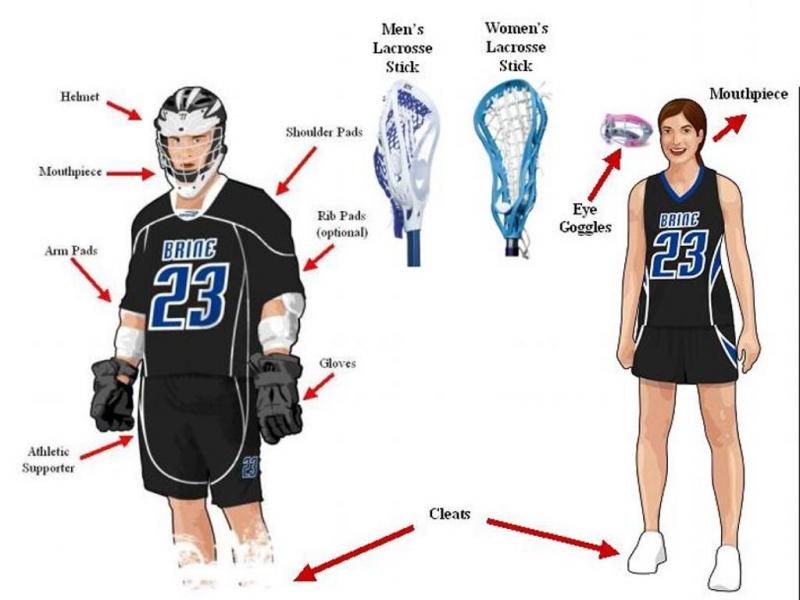
Many brands now offer adjustable lacrosse shoulder pads with removable inserts and velcro straps. These allow customizing thickness and tightness for your optimal fit. Adjustable pads also enable modifying protection as you strengthen and refine body control when absorbing checks.
Getting the Right Arm Pad Fit Reduces Restricted Arm Movement
Your lacrosse arm pads must fit well to allow proper mobility. Ill-fitting pads can dig into your biceps when flexing, restricting critical motions for cradling, throwing, and checking. Look for contoured, low-profile arm pads offering lightweight protection without limiting range of motion. For optimal fit, ensure the pads wrap snugly but don’t constrict arm muscles when moving. Adjustable arm pads with removable inserts or length extenders are ideal for dialing in the perfect personalized fit.
Well-fitted equipment removes mobility barriers, empowering you to maximize your potential. Regularly reevaluate gear fit. Small adjustments could provide a competitive edge this season.
So, you just got some slick new lacrosse gear – a fresh stick and some padded-up shoulder pads – and you’re ready to hit the field for practice. You’ve got the look dialed in, but something still feels…off. Maybe your new stick and pads are throwing off your swagger a bit. Don’t sweat it though, adjusting to new lacrosse gear can take some time. With a few tweaks and adjustments, you’ll be styling and profiling up and down the field in no time.
First, let’s talk about how your lacrosse stick can impact your gait and mobility. The position and angle of your stick head plays a big role here. Ideally, you want the head positioned close to your hands in front of your body, with the scoop angled slightly downward. This allows you to cradle and carry the ball smoothly without reaching or contorting your upper body. It also puts your hands and stick in a ready position to pass, catch, and shoot efficiently.
If your stick head is hanging too low or the angle is too extreme, it can significantly restrict your arm movement and stride when running. You end up having to swing the stick outward or away from your body just to take a normal step. This throws off your balance and messes with the timing of your footwork. Angling the head upward helps get it out of the way, while still keeping the ball secure in your cradling pocket.
You can play around with exactly where you place your top hand on the shaft to fine tune the head angle and position. Sliding it lower brings the head up, while higher hand placement angles it downward. Don’t be afraid to experiment to find what works best for you. Once you get that dialed in, muscle memory will take over and it’ll start to feel natural.
Adjusting Stick Head Angle Allows for Quick Stick Position Changes
Being able to quickly change the angle and position of your stick head is also key. As you cut, dodge, and maneuver around the field, you need to seamlessly transition from cradling to passing, shooting, poking, etc. Finding that sweet spot stick setup for your frame and playing style lets you make these transitions without hesitation.
For example, as an attackman driving toward the crease, you’ll want the stick head positioned upright to protect the ball. But as soon as you get close enough to take a shot, you’ll need to angled the head down to whip it into shooting position quickly. Having the head dialed in to your hands means you can make these changes on the fly.
The same goes for passing – being able to smoothly rotate your stick from cradling to passing without adjusting your hands means delivering crisp, on-target outlet passes to midfielders or cutters. Your teammates will appreciate those hot dimes you’ll be dishing when your stick positioning is locked in.
One final stick adjustment tip: don’t forget about the pocket and shooting strings! You may need to dial in the pocket depth, whip, and channel configuration to complement your preferred head angle and throwing motion. As you get a feel for the stick, use a pocket pounder to break in the leathers and deepen the pocket. Play around with sidewall and shooting string patterns to fine tune the channel and release. Finding your ideal pocket setup will make cradling, passing, and shooting even more effortless.
Now that you’ve got your stick dialed for superior gait and quick moves, let’s talk about how shoulder pads can affect mobility as well. Lacrosse shoulder pads provide vital protection for your collar bone, ribs, chest, and back. But excessive bulk and restrictive straps can hamper your movement on the field.
First, make sure the pad size matches your frame – they shouldn’t be so bulky on your shoulders and back that they impact range of motion. Excessive padding can limit how freely you can move arms when cradling, passing, and shooting. Consider sizing down if your pads are too hulking.
Next, check the fit of the belly pad and straps. Things should be snug but not constricting against your torso. Straps across your rib cage and waist should have a comfortable fit with a bit of give. If straps are too tight, your breathing and mobility will be restricted. This can not only impact conditioning during games, but may alter your normal running gait as well.
Also examine the pads’ armhole cut – this can have a big impact on fit around your shoulders. A high cut with ample room lets your shoulders sit comfortably underneath and rotate freely. If the armholes are too small, it can pinch movement during play. Reach out, cradle, shoot – move through your full range of motion to spot any potential restrictions.
If you notice mobility limitations, first try adjusting straps for a little more breathing room before deciding to size up. Also consider swapping to a pad with a larger armhole cut to open up the shoulders. Don’t be afraid to mix and match different brands to find components that complement yourplaying style and positional needs.
Lastly, pay attention to weight. Heavier pads require more energy to move around and can wear you down over the course of a game. New pad materials like polyethylene foam offer light yet highly protective options without restricting movement.
Adjusting your lacrosse gear for a smooth gait and seamless field mobility takes some trial and error. But sticking with it (pun intended) will pay off big time in your game. So tweak that pocket depth, reposition that head, and customize those pads until everything feels like a natural extension of your athletic prowess. Once you dial in the fit of your new gear, you’ll be playing faster, smoother, and more confidently in no time. Now get out there and unleash your upgraded lacrosse game on the competition!
Lacrosse is a fast-paced, high-impact sport. As an athlete, having properly fitted gear that moves with you is crucial for optimal performance. But oftentimes, brand new equipment needs some breaking in and adjustment for the best fit. Your shiny new lacrosse stick and shoulder pads might look great, but ill-fitting gear could throw off your gait and mobility on the field. Let’s explore some key ways to customize your setup for fluid movement and a competitive edge.
First, dialing in the perfect pocket and head positioning on your new lacrosse stick is key for balanced cradling, passing, and shooting. Start by adjusting the angle of the head to complement your playing style and arm length. Positioning the scoop slightly downward with the head close to your hands promotes smooth, controlled ball handling without overreaching. Too much downward angle, however, can restrict mobility.
Next, break in the leather and mesh pocket with some pocket pounding until the depth feels right. Deepen the pocket gradually for better ball control. Tailor shooting strings and sidewall patterns to fine-tune the channel and release point. Finding your customized pocket sweet spot will pay dividends in quick sticks and accurate feeding.
Pad up those shoulders correctly and your mobility will also improve. Shoulder pads that are too bulky or ill-fitted can mean limited range of motion on the move. Excess padding restricts natural arm motion during cradling, passing, and shooting. Consider sizing down if your pads are overly hulking.
Improper Chest Pad Fit Can Limit Range of Motion
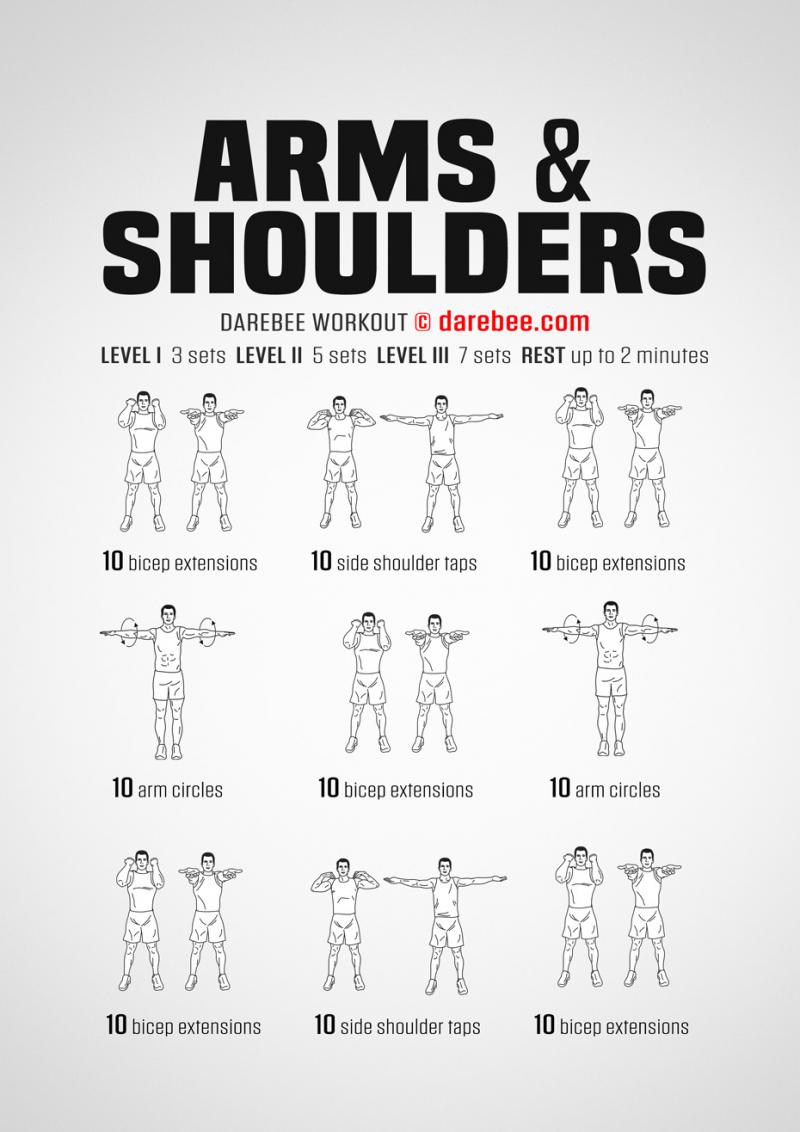
An improper chest pad fit is another culprit that can hamper mobility. Excessively tight straps constrict breathing and natural running mechanics. Loose, inaccurate sizing leaves you vulnerable to impact. Tailor the pads and straps to a snug fit with a bit of give for fluid movement.
The armhole cut is also vital for unrestricted shoulder movement. A high cut with ample room prevents pinching and allows your shoulders to rotate freely underneath. Small armholes will quickly limit your range when powering shots and passes. Prioritize shoulder pads with larger armhole cutouts.
Heavy pads also require more exertion to move in, which drains energy reserves quicker. Newer lightweight pad materials balance protection and mobility. Consider options like polyethylene foam to shed excess weight without sacrificing safety.
Dialing in the right lacrosse setup takes experimentation, but optimizing your stick and pads results in faster, more confident play. Make micro-adjustments to items like pocket depth, shooting strings, pad straps, and armhole cuts as needed. Don’t be afraid to tweak until it feels like an extension of your athletic ability.
With practice, your tailored stick will deliver quick releases and accurate feeds. Properly fitted pads will move seamlessly with your body for full, fluid range of motion. You’ll cut faster, shoot harder, and handle the rock with ease. Defenders will be left in the dust as you wheel upfield with your customized gear. The result of fine-tuning your equipment? Pure lacrosse flow and dominance. Get out there and own the field with your dialed-in setup!
As a lacrosse player, having properly fitted gear allows you to play to your full athletic potential. But brand new equipment right out of the box doesn’t always offer an ideal fit. The latest stick or shoulder pads may look slick, but ill-fitting lacrosse gear can throw off your mobility on the field. The good news? Making a few custom adjustments will have you styling in no time.
First up, dialing in your lacrosse stick is crucial for balanced play. Finding the right head angle lets you smoothly cradle and handle the rock. Positioning the scoop slightly downward promotes controlled ball carrying without overreaching. Avoid angling the head too far down, as this can limit mobility.
Tailoring the pocket takes experimentation too. Use a pocket pounder to deepen the leathers and mesh until the ball sits perfectly. Tweak shooting strings and sidewall patterns to fine-tune the release point and channel. A customized pocket provides quick sticks and accurate passing.
Getting the pads right is just as important. Excessive shoulder pad bulk restricts natural motion during play. Oversized padding can mean limited range when ripping shots or dodging defenders. Consider sizing down if your pads are too bulky.
Checking Your Glove Fit Ensures Maximum Flexibility
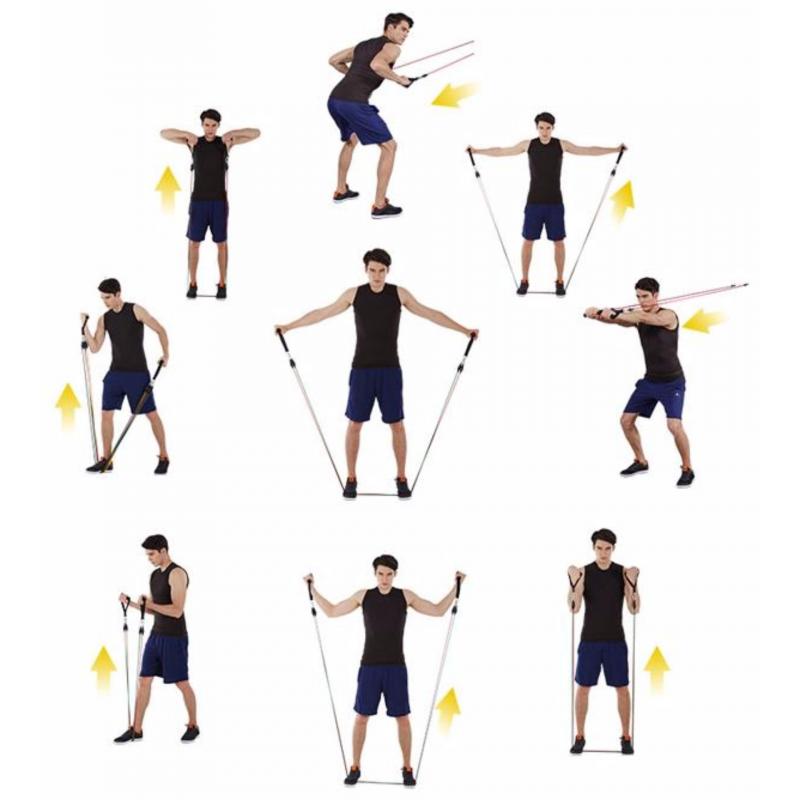
Your lacrosse glove also impacts flexibility. Trying out different glove brands and sizes leads to the best fit. For optimal dexterity, ensure your fingers reach all the way into the fingertips without excess material bunching up. Snug gloves with adjustable wrist straps allow effortless stick handling.
Testing glove flexibility is also key. Make fists, bend fingers, and fully extend your wrists to guarantee full motion. Move your hand into cradling position and check for any tight spots that may chafe or limit movement during play. Take practice shots and scoops to break in the glove palm padding too.
Dialing in equipment takes trial and error, but optimized lacrosse gear leads to confident, fluid play. Make micro-adjustments to items like pocket depth, shooting strings, pad straps, and gloves until everything feels like an extension of your athletic prowess.
With practice, your tailored stick becomes a perfect ball handling machine, while flexible pads and gloves move seamlessly with your every cut, dodge, and shot fake. You’ll have defenders stumbling in your wake as you wheel upfield with customized precision gear. Get out on the field and unleash your optimized lacrosse game for maximum style and dominance!
Try Adjustable Face Masks for Better Vision and Breathability
As any lacrosse player knows, having the right protective equipment is crucial for safe and effective play. However, finding gear that truly fits your individual needs can be a challenge. One key piece of equipment that can make a big difference is your face mask. Going with an adjustable face mask can provide critical advantages in vision, breathability, and overall comfort.
Standard lacrosse face masks often have a universal one-size-fits-all design. While these may get the job done, they frequently fall short in providing optimal visibility and airflow. An ill-fitting mask can limit your peripheral vision or leave uncomfortable gaps against your face. On the other hand, adjustable masks allow you to customize the fit to your facial structure for better coverage and visibility.
Many adjustable masks feature multiple removable padding inserts of varying thicknesses. By mixing and matching these pads, you can modify the interior space of the mask so it sits snugly against your cheeks. This helps stabilize the mask and prevent shifting during intense play. The enhanced fit also leads to fewer annoying gaps that can let in dirt, sweat, and debris.
In terms of vision, adjustable masks give you more control over positioning the cage in your ideal sightlines. You can tweak the angle and distance from your eyes to expand your field of view for noticing developing plays or incoming checks. Greater peripheral vision also aids your spatial awareness and reaction time on the field.
Proper airflow is another advantage of custom-fitting your mask. Ill-fitting masks often leave air gaps near the nose or chin, forcing you to breathe through small openings on the sides. Adjustable mask padding lets you seal edges while retaining space in front of your mouth and nose for smooth, unrestricted breathing. Enhanced airflow keeps you cooler and helps reduce fogging issues in your mask during games.
While protection is the top priority, comfort should not be overlooked. An adjustable face mask alleviates uncomfortable pressure points and chafing that result from generic one-size masks. Custom fitting your interior pads creates a secure, snug fit that still feels good during intense gameplay and repeated blows. You stay protected without having to constantly adjust and readjust your mask.
Many high-end adjustable masks also incorporate moisture-wicking antimicrobial padding. The antimicrobial layer inhibits the growth of odor and bacteria, keeping your mask fresher. Meanwhile, wicking fabrics pull sweat away from your skin for increased comfort. Some models even include padding channels for inserting ice packs or cooling gel pads to beat the heat.
When shopping for adjustable masks, look for gear that includes multiple sets of interchangeable padding inserts in a range of thicknesses. This makes it easier to dial in the ideal fit. Seek out lightweight yet durable masks constructed from resilient metals with anti-glare coatings for maximized vision.prioritize comfort features like chin straps, moisture-wicking linings, and cushioned forehead pads.
While adjustable masks carry a higher price tag than generic ones, the benefits make them a worthwhile investment for serious lacrosse players. The ability to customize vision, breathability, stability, and comfort translates directly into improved performance. With the right adjustable mask, you can elevate your game and take the field with confidence.
Are Your Lacrosse Stick and Shoulder Pads Compromising Your Gait? Here’s How to Make Key Adjustments for a Better Fit:
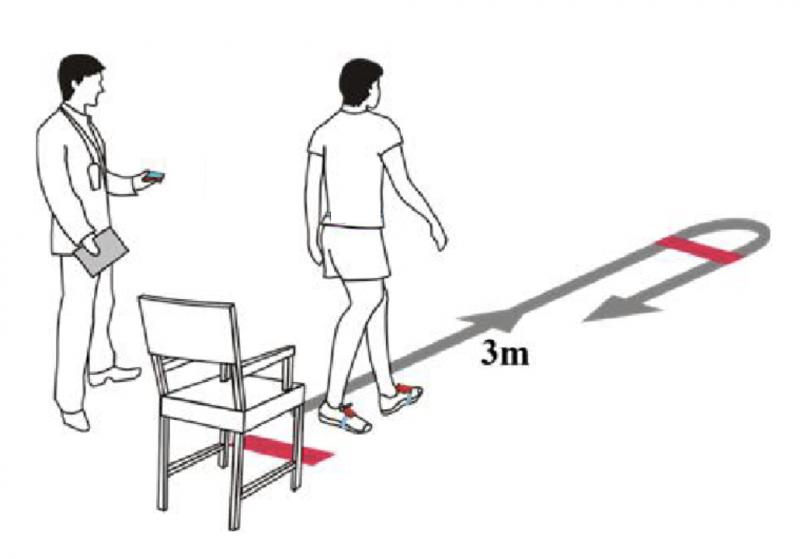
As a lacrosse player, having properly fitted equipment is essential for peak performance. However, even high-quality lacrosse gear can begin compromising your gait and mobility over time through poor adjustments or lack of maintenance. Your lacrosse stick and shoulder pads, in particular, must work in synergy with your body’s natural mechanics for fluid, powerful movement on the field. Making a few key equipment adjustments and paying attention to fit can get you back to your free-flowing best.
An ill-adjusted lacrosse stick is one of the most common culprits behind restricted gait and discomfort. As you play through games and practices over months and years, it’s easy for the stick’s pocket to become baggy, offsetting your balance and throwing off the symmetry of your arm swing. This can translate into stiffness, uneven strides, and reduced speed.
Fortunately, a couple of simple adjustments can restore your stick’s responsiveness. Start by checking the pocket depth – you generally want the ball to sit just above the bottom of the head when placing it in the pocket’s center. If the pocket is too deep, use a lacrosse ball or shoe to increase tension across the pocket bed and tighten the shooting strings. You can also replace the traditional woven shooting string with a nylon monofilament setup for a quicker release.
Next, examine the overall balance of your stick when holding it naturally at your side. The bottom corner of the head should align horizontally with the tip of your elbow for even weighting through your hands, arms and shoulders. If the head feels too low or high, adjust the length of the shaft accordingly. This may mean replacing it with a longer or shorter model that centers the head’s weighting on your hands.
Getting your shoulder pads properly dialed in is also key for cohesive movement. Loose, ill-fitting pads can slide around on your torso and shoulders, throwing off your frame’s symmetry. This impedes your ability to fluidly rotate your upper body and drive motion from your core.
Start by centering the shoulder caps on the points of your shoulders when strapping the pads on. The caps should contour snugly over your shoulders without collarbones jutting out. If the caps are shifting or sitting high on your shoulders, tighten the elastic bicep straps to stabilize the pads against your upper arms.
You can also utilize adjustable interior harness systems on higher-end pads to customize the fit. Configure the straps to pull the shoulder caps tight to your body. For extra stabilization, attach integrated belt straps around your chest. Well-secured pads will move naturally with your shoulders for unencumbered checks, passes and shots.
Pad comfort also impacts mobility. Excess interior padding causes chafing and restricts your shoulder mobility. Swap out thick pads for sleeker, low-profile options with high-tech padding in the caps and ventilation channels for cooling airflow. This allows a flexible, comfortable fit.
Finally, examine the pad’s upper chest and back plates. Excessive bulk here can hinder your ability to flex at the waist and rotate your torso. Look for shoulder pads with minimalist chest padding focused mainly around the sternum. Curved, form-fitting back panels also enhance your freedom of motion.
With lacrosse gear, fit and adjustability are half the battle when working toward your athletic best. Take time periodically to check in on your equipment setup and make tweaks for optimal mobility. Proper alignment and reduced chafing go a long way toward free-flowing, high-performance play. By dialing in the right fit adjustments for your lacrosse stick and shoulder pads, you can unlock new levels of command, comfort, and quickness on the field.
Elbow Pad Placement Impacts Forearm Rotation and Comfort
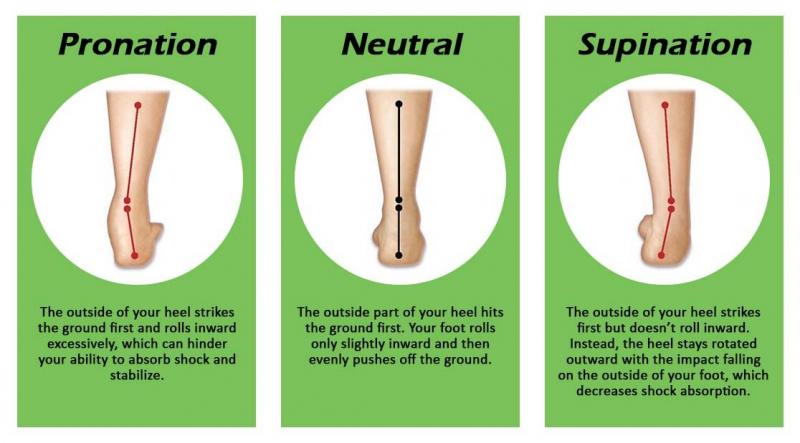
For lacrosse players, wearing properly fitted elbow pads is a must for protection during those inevitable falls and checks. However, many players fail to realize that pad placement directly impacts range of motion, forearm rotation, and overall comfort. Taking the time to dial in the right elbow pad position can enhance your mobility and prevent restrictions when cradling, passing, and shooting.
Elbow pads come in a range of styles, from basic sleeves to multi-piece pads with overlapping flaps. While these provide padding over the joint, they can also limit natural arm flexion if worn incorrectly. The key is ensuring the pads articulate smoothly with your elbow hinges when moving your arms.
Start by strapping the pads just below your elbow joints. The pads should wrap snugly around the narrowest part of your forearms. This centers the protective padding right over the joint when your arms are relaxed at your sides. If the pads sit too low or high, they can pinch the muscles around your joint during flexion.
Next, check pad tightness by extending and bending your elbows. The pads should flex easily with your joint movements without binding or tugging. If needed, loosen arm straps to allow a full range of motion. The pads will stabilize once your forearm muscles expand when active on the field or court.
Pay attention to forearm rotation as well by rolling your wrists with pads on. There should be no restriction or pinching sensation. If rotation feels limited, the pad straps may be too tight through the forearms. Loosen them up so the padding can flex seamlessly as your forearm muscles rotate the wrist.
For multi-piece pads, make sure the extensions and flap overlays don’t obstruct motion. Position the extensions to run along your inner and outer forearms, away from the direct joint line. Set any overlap flaps to sit comfortably over your muscles without bunching near your elbow creases.
Getting pad tightness right may require some trial and error. But taking the time to customize fit prevents mobility limitations that can throw off your mechanics. With sleeves or pads secured too low, tight, or high, you sacrifice the free flexion needed for quick, accurate cradle and release motions. Well-fitting elbow pads move seamlessly with your arms.
Beyond flexibility, elbow pad placement is also key for cooling airflow. Sweaty pads lead to irritation, odors, and even infections if bacteria builds up inside. Make sure to leave small gaps between pad openings near your inner/outer elbow creases rather than covering them completely.
These vents allow air circulation to keep your elbows breathing and dry. Moisture-wicking sleeve linings add extra sweat and odor control. Just be mindful of pad openings that are too loose, which leave your elbow joints exposed.
For maximum comfort, look for elbow pads with strategic padding zones that mimic your elbow’s shape. This places cushioning material where impacts are most likely while eliminating bulk. Low-profile pads with compression sleeves also reduce irritation, pinching and chafing.
Replace hand-washable pads periodically before bacteria accumulate. And never wear elbow pads directly against skin without wicking sleeve linings. This invites friction, trapping sweat and microbes against your elbows under the pads.
Beyond pads, also ensure any compression sleeve worn under your pads aligns correctly with your elbow joint. Misplaced sleeves can bunch up and cause pinching issues. After putting on sleeves, gently bend and extend your elbows to ensure smooth articulation before adding pads.
Even high-performance elbow pads can quickly go from protective to restrictive if worn incorrectly. By taking the time to dial in placement, venting and tightness around your arm’s natural flexion points, you gain a balance of mobility and security to take on the field with confidence.
Are Your Lacrosse Stick and Shoulder Pads Compromising Your Gait? Here’s How to Make Key Adjustments for a Better Fit:
As a lacrosse player, having properly fitted equipment is essential for peak performance. However, even high-quality lacrosse gear can begin compromising your gait and mobility over time through poor adjustments or lack of maintenance. Your lacrosse stick and shoulder pads, in particular, must work in synergy with your body’s natural mechanics for fluid, powerful movement on the field. Making a few key equipment adjustments and paying attention to fit can get you back to your free-flowing best.
An ill-adjusted lacrosse stick is one of the most common culprits behind restricted gait and discomfort. As you play through games and practices over months and years, it’s easy for the stick’s pocket to become baggy, offsetting your balance and throwing off the symmetry of your arm swing. This can translate into stiffness, uneven strides, and reduced speed.
Fortunately, a couple of simple adjustments can restore your stick’s responsiveness. Start by checking the pocket depth – you generally want the ball to sit just above the bottom of the head when placing it in the pocket’s center. If the pocket is too deep, use a lacrosse ball or shoe to increase tension across the pocket bed and tighten the shooting strings. You can also replace the traditional woven shooting string with a nylon monofilament setup for a quicker release.
Next, examine the overall balance of your stick when holding it naturally at your side. The bottom corner of the head should align horizontally with the tip of your elbow for even weighting through your hands, arms and shoulders. If the head feels too low or high, adjust the length of the shaft accordingly. This may mean replacing it with a longer or shorter model that centers the head’s weighting on your hands.
Getting your shoulder pads properly dialed in is also key for cohesive movement. Loose, ill-fitting pads can slide around on your torso and shoulders, throwing off your frame’s symmetry. This impedes your ability to fluidly rotate your upper body and drive motion from your core.
Start by centering the shoulder caps on the points of your shoulders when strapping the pads on. The caps should contour snugly over your shoulders without collarbones jutting out. If the caps are shifting or sitting high on your shoulders, tighten the elastic bicep straps to stabilize the pads against your upper arms.
You can also utilize adjustable interior harness systems on higher-end pads to customize the fit. Configure the straps to pull the shoulder caps tight to your body. For extra stabilization, attach integrated belt straps around your chest. Well-secured pads will move naturally with your shoulders for unencumbered checks, passes and shots.
Pad comfort also impacts mobility. Excess interior padding causes chafing and restricts your shoulder mobility. Swap out thick pads for sleeker, low-profile options with high-tech padding in the caps and ventilation channels for cooling airflow. This allows a flexible, comfortable fit.
Finally, examine the pad’s upper chest and back plates. Excessive bulk here can hinder your ability to flex at the waist and rotate your torso. Look for shoulder pads with minimalist chest padding focused mainly around the sternum. Curved, form-fitting back panels also enhance your freedom of motion.
With lacrosse gear, fit and adjustability are half the battle when working toward your athletic best. Take time periodically to check in on your equipment setup and make tweaks for optimal mobility. Proper alignment and reduced chafing go a long way toward free-flowing, high-performance play. By dialing in the right fit adjustments for your lacrosse stick and shoulder pads, you can unlock new levels of command, comfort, and quickness on the field.
Shin and Knee Pad Adjustments Prevent Chafing and Improve Movement
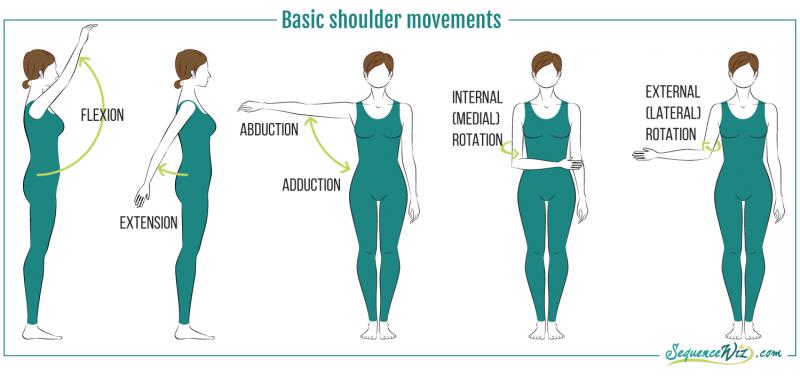
Lacrosse leg pads are crucial for protecting players from bruising checks, turf burns, and collisions. But even high-end shin and knee pads can become restrictive and uncomfortable over time as elastic straps loosen and padding compacts.
Taking a few minutes to re-align and adjust your pads helps restore a customizable, secure fit. Proper placement tailored to your legs’ shape and mechanics is key for preventing chafing while enhancing mobility.
Start by examining pad placement in relation to your knee’s center. Strapping shin pads too low can expose your knees, while wearing them too high limits lower leg flexion. Make sure pads wrap centrally over the thickest, meatiest part of your calves for protection.
Knee pads should sit right over the kneecap, not pushing down toward your shins. Center their protective cups directly atop your joint line, strapping them tight enough to prevent drifting without restricting your knees’ natural range of motion.
Check flexibility by doing squats, lunges, and cross-leg stretches with pads on. Your knees and ankles should move through a comfortable, unhindered arc. If pads feel stiff and binding, loosen straps so they contour smoothly to your legs’ shape during activity.
For pads with removable interior liners, make sure to align any pad extensions along your inner and outer knee grooves where impacts often occur. Avoid bunching that can pinch skin and nerves.
While you want pads firmly secure, leaving no wiggle room can backfire by irritating your skin. Thin, moisture-wicking sleeve liners worn under pads prevent chafing from friction. If pads lack sleeve integration, apply anti-chafe balms on hot spots prone to rubbing.
Routinely check pads during games and practices for hot, reddened skin signaling irritation. Promptly readjust straps to relieve unwanted pressure. Swelling from activity can change how pads interface with your legs, so be vigilant.
For severe chafing or blisters from restrictive pads, switch to open-backed sleeve alternatives. These secure tightly with compression while eliminating closed-pad chafing across your calves, knees and hamstrings.
Padding breakdown over time can also reduce protection and comfort. Compressed foam loses cushioning capacity, becoming uncomfortably dense. Replace expired pads with fresh padding rebound for impact absorption.
Additionally, laundering pads regularly keeps them sweat and bacteria-free. Follow care instructions to prevent shrinkage or strap damage. Let pads fully air dry before reapplying.
Adjustable pads with mix-and-match strapping provide a more customized fit as your body changes. Swapping out worn padding inserts also restores protection until you’re ready for new pads.
Proper leg pad adjustments enhance your stability and mobility by contouring tightly without chafing or restricting your natural lower body mechanics. Taking a few minutes before and after games to check fit means confident, comfortable play protected from bruising blows.
Are Your Lacrosse Stick and Shoulder Pads Compromising Your Gait? Here’s How to Make Key Adjustments for a Better Fit:
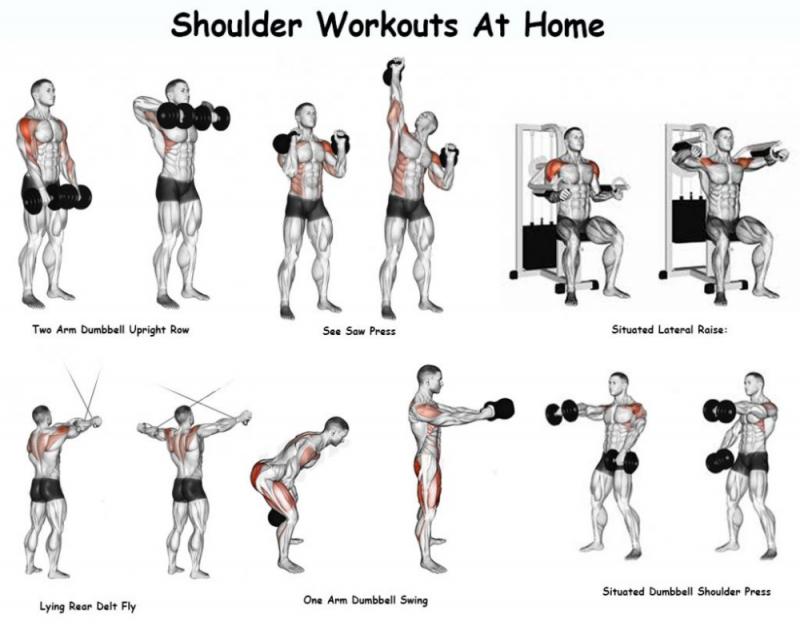
As a lacrosse player, having properly fitted equipment is essential for peak performance. However, even high-quality lacrosse gear can begin compromising your gait and mobility over time through poor adjustments or lack of maintenance. Your lacrosse stick and shoulder pads, in particular, must work in synergy with your body’s natural mechanics for fluid, powerful movement on the field. Making a few key equipment adjustments and paying attention to fit can get you back to your free-flowing best.
An ill-adjusted lacrosse stick is one of the most common culprits behind restricted gait and discomfort. As you play through games and practices over months and years, it’s easy for the stick’s pocket to become baggy, offsetting your balance and throwing off the symmetry of your arm swing. This can translate into stiffness, uneven strides, and reduced speed.
Fortunately, a couple of simple adjustments can restore your stick’s responsiveness. Start by checking the pocket depth – you generally want the ball to sit just above the bottom of the head when placing it in the pocket’s center. If the pocket is too deep, use a lacrosse ball or shoe to increase tension across the pocket bed and tighten the shooting strings. You can also replace the traditional woven shooting string with a nylon monofilament setup for a quicker release.
Next, examine the overall balance of your stick when holding it naturally at your side. The bottom corner of the head should align horizontally with the tip of your elbow for even weighting through your hands, arms and shoulders. If the head feels too low or high, adjust the length of the shaft accordingly. This may mean replacing it with a longer or shorter model that centers the head’s weighting on your hands.
Getting your shoulder pads properly dialed in is also key for cohesive movement. Loose, ill-fitting pads can slide around on your torso and shoulders, throwing off your frame’s symmetry. This impedes your ability to fluidly rotate your upper body and drive motion from your core.
Start by centering the shoulder caps on the points of your shoulders when strapping the pads on. The caps should contour snugly over your shoulders without collarbones jutting out. If the caps are shifting or sitting high on your shoulders, tighten the elastic bicep straps to stabilize the pads against your upper arms.
You can also utilize adjustable interior harness systems on higher-end pads to customize the fit. Configure the straps to pull the shoulder caps tight to your body. For extra stabilization, attach integrated belt straps around your chest. Well-secured pads will move naturally with your shoulders for unencumbered checks, passes and shots.
Pad comfort also impacts mobility. Excess interior padding causes chafing and restricts your shoulder mobility. Swap out thick pads for sleeker, low-profile options with high-tech padding in the caps and ventilation channels for cooling airflow. This allows a flexible, comfortable fit.
Finally, examine the pad’s upper chest and back plates. Excessive bulk here can hinder your ability to flex at the waist and rotate your torso. Look for shoulder pads with minimalist chest padding focused mainly around the sternum. Curved, form-fitting back panels also enhance your freedom of motion.
With lacrosse gear, fit and adjustability are half the battle when working toward your athletic best. Take time periodically to check in on your equipment setup and make tweaks for optimal mobility. Proper alignment and reduced chafing go a long way toward free-flowing, high-performance play. By dialing in the right fit adjustments for your lacrosse stick and shoulder pads, you can unlock new levels of command, comfort, and quickness on the field.
Proper Cleat Fit Promotes Speed, Comfort and Ankle Support
As a lacrosse player, having properly fitted equipment is crucial for maximizing your performance on the field. Much attention often goes to fitting lacrosse sticks and protective gear, but one piece of equipment that can significantly impact your game is your cleats. Selecting the right cleats and ensuring they fit properly can make a world of difference when it comes to your speed, comfort and ankle support during play.
When trying on cleats, one of the first things to look at is the size and shape of the shoe itself. Cleats that are too small will constrict your feet and can cause blisters and black toenails – ouch! Cleats that are too big can cause your feet to slide around inside leading to blisters on your heels. Having cleats that properly conform to the shape of your feet provides stability and allows your ankles to function properly when cutting and changing direction.
Another key area to evaluate is the width of the cleats. Lacrosse requires a lot of lateral motion, so having cleats that are too narrow will pinch the sides of your feet and restrict movement. Wider cleats provide more comfort and allow your forefoot to spread naturally when pushing off and pivoting on the field. A proper width also enhances stability during cuts, dodges, and checks. If you notice the sides of the cleats digging into your feet, it’s a sign they are likely too narrow.
When you have the cleats laced up, pay attention to any pressure points or tight spots, especially across the bridge of the foot and balls of your feet. Your heel should be locked in place, but you don’t want excessive pressure on the rest of your foot. Walk around and even jog a bit to make sure there is no rubbing that could lead to blisters down the road. The cleats should feel like a natural extension of your foot.
Next, examine the fit in the toe box. You want the end of the shoe to have half a thumb’s distance between your longest toe and the top of the cleat. This extra room allows your foot to splay naturally when coming out of starts and accelerating down the field. No one wants their cleats pinching their toes! However, too much space can lead to your foot sliding forward on cuts and compromising stability.
Getting the right ankle fit is also critical. The ankle opening should be snug enough that you feel secure, stable, and locked-in when moving laterally, but not so tight that it digs into your ankle bones. Lace up the shoes and flex your ankle forward and backward, as well as inward and outward. You should have a full range of motion without any pinching.
Take time to test the cleats on the surface you play on most frequently. Harder cleat studs are ideal for firm, natural grass fields to provide traction. Shorter, more flexible cleats work better on artificial turf. You want studs that can grip the surface properly without getting caught up. Testing different stud configurations can ensure you get the right balance of traction and maneuverability.
Don’t forget to factor in your sock choice as well. Thicker socks take up more room inside the shoe which affects the overall fit. Once you’ve settled on your cleats, practice in them with the socks you’ll wear during games and practices. This allows you to identify any fit issues ahead of time before you take the field and tweak things like lacing to get the optimal, most comfortable fit.
Finally, inspect the wear patterns on your old cleats and any areas that caused discomfort. This can aid in identifying your unique pressure points and inform what to look for in a replacement pair. Don’t assume the same brand or model will fit the same each time. Feet change over time so continually reassess for proper fit.
Taking the time to properly fit your cleats can pay big dividends when it comes to your lacrosse game. Your feet are your foundation on the field, so getting cleats dialed in gives you the platform to play your fastest, most explosive and efficient game possible. The right fit promotes speed, comfort, and ankle support, keeping you performing at your highest level from the opening whistle to the final horn.
Are Your Lacrosse Stick and Shoulder Pads Compromising Your Gait? Here’s How to Make Key Adjustments for a Better Fit:
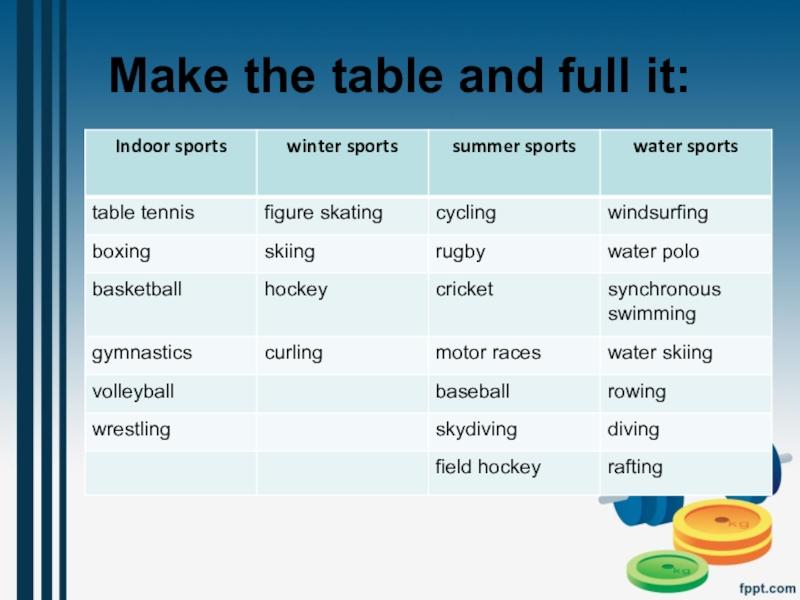
As a lacrosse player, you rely on your athleticism to succeed on the field. Speed, agility, quick cuts and dodges are essential to getting open, creating space from defenders and driving to the goal. To maximize these physical talents, you need equipment that moves with your body and allows you to play freely rather than hinder your natural abilities. Two pieces of gear that can greatly impact mobility if not properly fitted are lacrosse sticks and shoulder pads.
An ill-fitting lacrosse stick can significantly throw off your gait and running form. When cradling the ball, the bottom end of the stick should rest comfortably in your hands without feeling awkward. If the shaft is too long, it will extend too far past your hands and force you to overextend your arms and top half when cradling and running. This throws off your arm drive, disrupts your stride and prevents you from running efficiently. You end up exerting more energy just to control the stick.
Conversely, a shaft that is too short makes you cradle the ball too close your body. This constricts your arm motion, forcing you to take quicker, choppier steps in order to move your feet fast enough to match the speed of your stick. Again, this is inefficient and impedes your acceleration.
A properly fitted lacrosse stick allows you to cradle smoothly and keep the ball outside your frame. Your hands should control the bottom end while the rest of the stick extends from your shoulders and chest like another arm. This enables a free, flowing running form where your arm drive and stride match in sync.
Shoulder pads that are too bulky or sit improperly on your frame can also hinder mobility. Excessively large pads limit your arm range of motion, especially on your lead arm when cradling and handling the stick. Loose, improper fitting pads will slide around when cutting and changing direction, throwing off your balance and coordination.
Ideally, pads should be form-fitting without restricting motion. The chest and back plates should align properly with your torso so they move as one unit with your body. A secure fit around the shoulders and collarbone keeps the pads locked in place when planting, pivoting and engaging contact. Streamlined padding built specifically for lacrosse maximizes protection while enabling free upper body and arm movement.
Take time to analyze your gait both with and without equipment on. Look for any imbalances or restrictions that could be the result of an ill-fitted stick or shoulder pads. An unnatural, inefficient gait hampers acceleration and change of direction, two pivotal athletic traits in lacrosse. It also forces other muscles to compensate, increasing injury risk.
Making key adjustments to your lacrosse stick and shoulder pads allows you to regain a smooth, natural gait and running form. Properly fitted equipment moves seamlessly with your body so you can cut, dodge and handle the ball with peak mobility. This translates into quicker feet, better agility and maximum speed to help elevate your game.
Adjustable Back/Rib Pads Allow Better Torso Flexibility
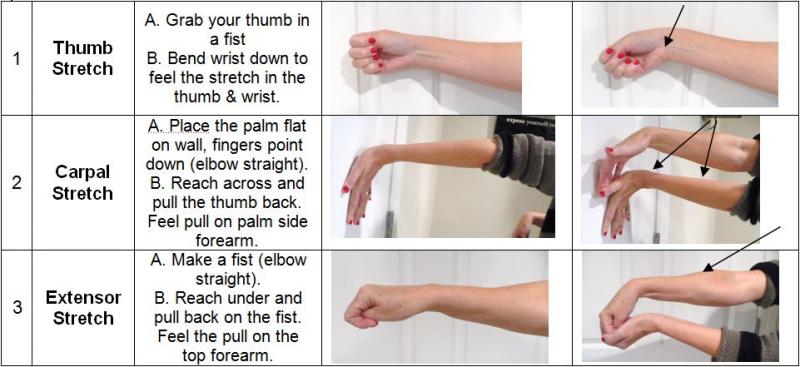
Having properly fitted protective gear is vital for any lacrosse player. While items like helmets and gloves get a lot of attention, one overlooked piece of equipment that can significantly impact performance are back/rib pads.
These pads safeguard a vulnerable part of the torso while also providing crucial range of motion for dodging, shooting, passing, and other skills. Fixed back pads with no adjustability can end up being too restrictive and limit flexibility, so selecting pads with adjustable features enhances fit.
Look for pads with adjustable straps at the waist and along the spine. This allows you to customize the tightness and positioning so the pads contour to your body shape. Well-fitted pads will wrap around your torso without sagging or digging into the sides.
For maximum flexibility, choose pads with an articulated or segmented back plate. This breaks up the padding into separate sections that independently flex as you twist and bend at the waist. Solid, non-articulated plastic back plates severely reduce mobility in your lower back and hips.
Adjustable shoulder caps are another useful feature for optimizing fit in the upper body. Being able to slide, widen, or angle the caps makes it easier to get full arm rotation without the pads impinging movement. Fixed, non-adjustable shoulder caps often restrict range of motion, especially on your lead arm when handling the stick.
Rib padding that you can add or remove also enhances your ability to customize the pads for better fit. More slender players often don’t need much rib protection and can opt for minimal padding to maximize freedom of movement. Bigger players may want thicker rib inserts for extra protection and stability in contact.
While back pads safeguard a vulnerable area, they should move seamlessly as part of your torso. Look for lightweight, breathable materials that don’t weigh you down. Sweat-wicking fabrics keep you cool and comfortable even during intense activity.
During sizing, be sure to mimic lacrosse motions like twisting, bending, scooping, passing, and shooting to see how the pads affect mobility. Properly fitted back pads will move naturally with your torso without impinging flexibility.
Correct pad height is also important for maximizing both protection and mobility. Pads should cover the ribs adequately without extending too far up the chest. Excessively long pads restrict how far you can raise your arms.
For goalies, look for a padded shirt style that maximizes coverage while enabling unrestricted motion. Adjustable belly pads and extended tailbone padding safeguard areas prone to impact while bending and lunging. Built-in rib padding enhances flexibility better than bulky external pads.
Take time to analyze your playing style and determine where you need padding most. Is added rib protection necessary or will it sacrifice mobility? How much back coverage do you need versus enabling torso rotation?
Finding the right balance through adjustable and customizable padding gives you the best of both worlds – crucial protection for vulnerable areas and unhindered flexibility to perform lacrosse skills. Well-fitted, articulated back pads move as part of your torso without compromising mobility.
Are Your Lacrosse Stick and Shoulder Pads Compromising Your Gait? Here’s How to Make Key Adjustments for a Better Fit:
As a competitive lacrosse player, you rely heavily on speed, quickness, and athleticism. Having a natural, efficient gait and running form provides the foundation for superior mobility on the field. However, improperly fitted equipment like lacrosse sticks and shoulder pads can significantly impact your gait and hamper mobility.
An ill-fitting lacrosse stick disrupts your arm drive and stride synchronization while running. Sticks that are too long or short alter your mechanics, negatively affecting acceleration and change-of-direction. A properly fitted stick becomes an extension of your body, enabling free form and optimal arm drive.
Shoulder pads that are bulky, loose, or sit improperly on your frame also impede agility. Excess size and weight reduce arm range of motion, hampering stick skills. Pads that slide around throw off balance and coordination when cutting.
Proper fitting pads align securely to your shoulders and torso without limiting mobility. Snug, contoured pads stay locked in place as you plant, pivot, and engage contact. Streamlined padding built for lacrosse maximizes protection while enabling free arm and body movement.
Analyze your gait and look for imbalances or restrictions that could stem from poor equipment fit. An abnormal gait forces other muscles to compensate and damages running efficiency. This hampers acceleration, cuts, and change-of-direction.
Making adjustments to your lacrosse stick length and shoulder pad fit allows you to regain a smooth, natural stride. Properly fitted equipment moves seamlessly as an extension of your body. This maximizes mobility for quicker feet, better agility, and pure athletic dominance on the field.
Don’t let ill-fitted gear sabotage your athletic gifts. A tailored lacrosse stick and properly contoured shoulder pads will unleash your speed, cuts, and quickness to new heights. Treating equipment fitting as part of your training helps optimize performance and gain an edge over opponents.
Select Lightweight Gear Without Sacrificing Protection
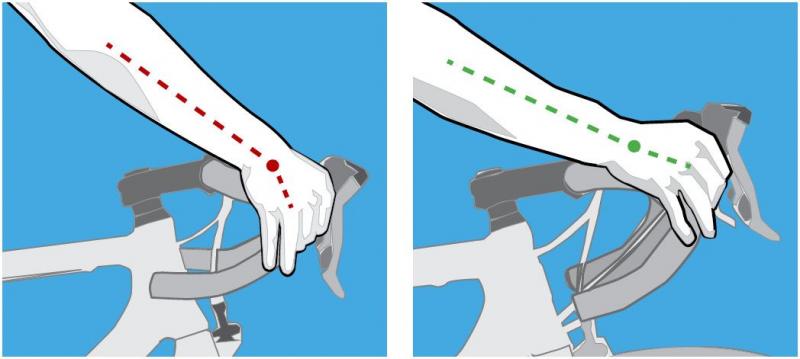
When suiting up for lacrosse, you want gear that protects without weighing you down. Advances in sports technology now provide equipment that is lightweight, streamlined and low-profile, yet still delivers crucial protection.
Starting with the helmet, look for models maximizing vent holes for enhanced breathability. Advanced polycarbonate shells resist impact while minimizing mass on your head. This enhances mobility and reduces neck fatigue.
For shoulder pads, choose options with ventilated arch plates that increase air flow. Padding like lightweight EVA foam or removable air belts cut down bulk without affecting protection. Look for high-mobility designs contoured specifically for lacrosse movements.
In gloves, most protection comes from the cuff and wrist area. Focus on gloves with minimal padding on the fingers and backs for dexterity when handling the stick. Added mesh panels also increase breathability.
For arm guards, splints now come in low-profile, flexible options that are barely noticeable when worn. Streamlined designs eliminate unnecessary bulk from traditional hockey-style elbow pads.
In gloves and arm guards, ensure any protective padding incorporates perforations or mesh fabric to allow ventilation and cooling. This reduces trap heat and moisture when active.
Rib vests balancing protection and breathability are now available for added torso coverage. Lightweight, ventilated vests and shirts provide extra padding over vulnerable ribs and organs without sacrificing mobility.
For goalies, padded shirts augment protection while maintaining flexibility. Built-in rib and stomach padding combined with removable air chambers reduce mass. Vent holes in the chest and underarms enhance air flow.
When evaluating gear weight, remember that a few ounces here and there add up when carried for an entire game. Ounces shed from pads, helmets and clothing allow you to play faster and more aggressively with less fatigue.
The key is strategically maximizing protection only where truly needed while optimizing ventilation and breathability. Streamlined modern lacrosse gear enhances mobility and cuts down on unnecessary mass.
Additionally, moisture-wicking, lightweight fabrics in clothing and practice gear reduce heat buildup and water retention that weigh you down. Well-designed lacrosse gear provides targeted protection while keeping you light on your feet.
Are Your Lacrosse Stick and Shoulder Pads Compromising Your Gait? Here’s How to Make Key Adjustments for a Better Fit:

In lacrosse, maintaining proper form and efficient movement patterns gives you an athletic edge over opponents. However, improperly fitted gear like lacrosse sticks and shoulder pads can disrupt your natural gait and mobility.
Sticks that are too long or short force you to overcompensate when running, throwing off arm-leg synchronization. This hampers acceleration and control. A tailored stick becomes an extension of your body for optimal form.
Ill-fitting shoulder pads either restrict motion if too bulky or slide around if too loose. Contoured pads secured tightly to your frame move naturally as you cut, pivot and plant. Targeted padding enables free arm mobility.
Analyze your gait and look for imbalances that could be caused by poor equipment fit. An abnormal stride or running form forces muscles to overwork and tires you quicker. Refine stick length and pad fit to regain efficient movement.
Properly fitted gear like gloves, shoes and other items also integrate seamlessly into your motion. Equipment tailored to your body removes restrictions and discomfort so you can focus on technique and performance.
With refined equipment fitting, your athletic talents will flourish. The right lacrosse stick and properly contoured pads maximize your natural speed, cuts and quickness. Let perfectly fitted gear provide the platform to elevate your game.
Regularly Re-Evaluate Your Equipment Fit as Your Body Changes
Finding properly fitted lacrosse gear is crucial for maximizing comfort and mobility. However, as your body changes with growth and training, what fit well originally may need adjustment.
For youth players, evaluate gear fit at least twice per season as you rapidly grow. Sticks, pads and other items fitting snugly at the start of the season can become undersized and restrictive just months later after growth spurts.
Have coaches measure your arm span and inseam at the beginning and end of seasons to quantify growth. This determines any necessary adjustments to stick length, shoulder pad sizing and other gear dimensions.
As your feet grow, the cleats providing a perfect fit one season will likely be too small the next year. Monitor foot measurements and buy sizes accommodating some growth rather than getting cleats too snug.
For gloves, make sure growing hands don’t become constricted by gloves properly fitted months prior. Fingers jammed against the ends of gloves lead to discomfort and reduced stick feel.
Even gear like chin straps and mouthguards need occasional refitting as faces mature. Reassess all equipment as the season progresses to ensure optimal comfort and ergonomics.
For high school and college players filling out physically, added muscle can impact fit. Shoulder pads fitting comfortably as a freshman may become restrictive as your chest and back expand. Neck widths increasing require new chin strap sizes.
As your body composition evolves with training, reevaluate areas like rib vest sizing to achieve proper coverage. Don’t assume previous fitting dimensions still apply after physical maturation.
Those adding size in the upper body and shoulders need to upsize shoulder pads so ranges of motion aren’t impinged when bulking up. However, avoid just jumping to XL sizes if truly not needed.
The distribution of added mass also matters. Some naturally broaden more in the shoulders and back, while late growth can disproportionately lengthen limbs and affect arm span.
Goalies gaining height and size need updated torso and thigh padding dimensions. And weight gain necessitates more ergonomic neck protection to lessen strain.
Take time periodically to remeasure key body areas against your current gear sizing. Don’t ignore small fit discomforts and assume they’ll break in. Listen to your body and make proactive adjustments.
While proper initial fitting sets the base, treat re-evaluation as an ongoing process. Your body doesn’t remain static – accurately fitting your evolving frame ensures comfort, mobility and protection when you need it most.
Are Your Lacrosse Stick and Shoulder Pads Compromising Your Gait? Here’s How to Make Key Adjustments for a Better Fit:
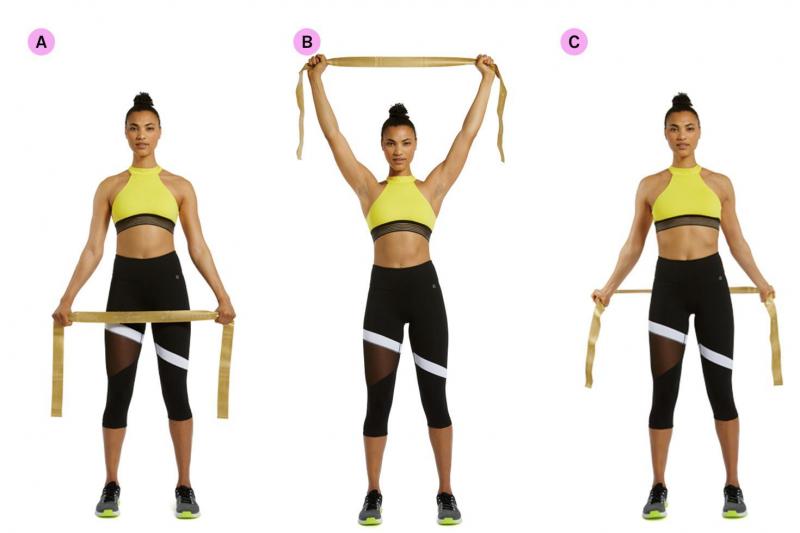
As a lacrosse player, your athleticism stems from efficient movement patterns and gait mechanics. Properly fitted equipment integrates seamlessly into those natural motions.
However, lacrosse sticks and shoulder pads not aligned to your frame can severely disrupt mobility. Sticks too long or short alter arm-leg coordination when running. Misfit pads restrict motion and mobility.
Getting sticks tailored to your exact arm span allows optimal synchronization between upper and lower body while accelerating. Properly contoured pads stabilize without limiting agility during cuts, rolls and stops.
Analyze your natural running and compare to how you move wearing gear. Identify any fit issues throwing off arm drive, stride, balance or body control. An abnormal gait hampers speed and mobility.
By dialing in proper equipment fit as your body evolves, your athletic gifts flourish rather than being hindered. Let perfectly fitted gear provide the platform to maximize your talents.

